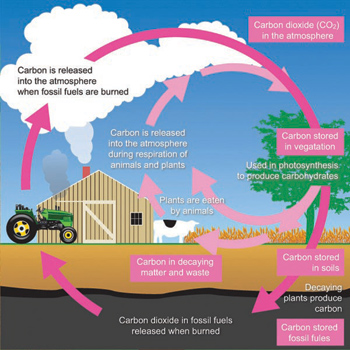Approximately 35% of global greenhouse gases (GHGs) come from agriculture. Some argues that human can reverse global worming by sequestering several hundred billion tons of excess CO2 through regenerative, organic farming, ranching and land use. Increasing the soil’s organic content will not only fix carbon and reduce emissions, it will also improve the soil’s ability to retain water and nutrients and resist pests and droughts.
To mitigate GHG emissions and retain soil fertility, organic agriculture might be a wise choice for decreasing the intensive use of synthetic fertilizers, protecting environments, and further improving crop yields. Recent research showed that replacing chemical fertilizer with organic manure significantly decreased the emission of GHGs. Organic farming can reverse the agriculture ecosystem from a carbon source to a carbon sink. [i.e. organic farming ties up and binds or “sequesters” carbon, instead of emitting any carbon. In other words, organic farming pulls carbon out of the environment and locks it in the soil.]
To explore the potential of farmlands acting as a carbon sink without yield losses, Jiang Gaoming, a professor at the Chinese Academy of Sciences’ Institute of Botany, conducted an experiment on a temperate eco-farm in eastern rural China. Crop residues were applied to cattle feed and the composted cattle manure was returned to cropland with a winter wheat and maize rotation. Crop yield and greenhouse gas (GHG) emissions were carefully calculated according to the Intergovernmental Panel on Climate Change (IPCC) Guidelines for National Greenhouse Gas Inventories 2006.
This study showed that replacing chemical fertilizer with organic manure significantly decreased the emission of GHGs. Yields of wheat and corn also increased as the soil fertility was improved by the application of cattle manure. Totally replacing chemical fertilizer with organic manure decreased GHG emissions, which reversed the agriculture ecosystem from a carbon source (+ 2.7 t CO2-eq. hm-2 yr-1) to a carbon sink (- 8.8 t CO2-eq. hm-2 yr-1).

